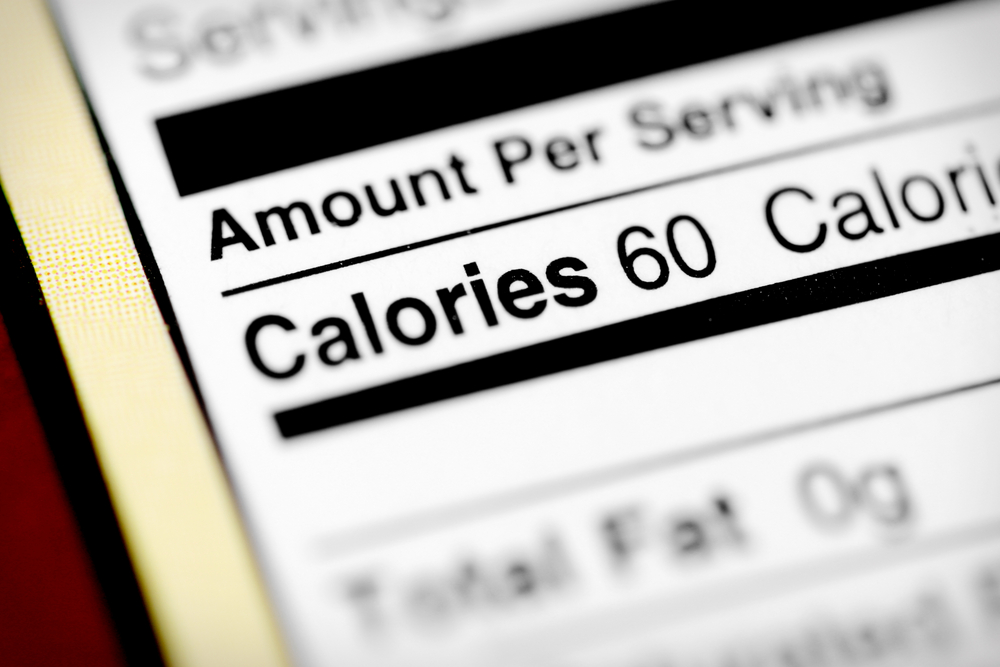
Why You Can’t Count Calories
September 8, 2012 // Fitness, Nutrition, Wellness
One of the most controversial subjects in health is the Calorie. A Calorie is understood to be a measure of energy; we take in Calories through food and liquids and we use Calories for basic internal functions and exercise. “Calories in vs. Calories out” is the globally recognized energy ratio that is used to change a person’s size and shape. Creating a deficit of calories through an increase in movement and/or a decrease in intake should, in theory, yield a reduction in body size and shape. Unfortunately for Calorie fanatics, our body size and shape are determined but by many other factors not just Calories. Furthermore, counting Calories is never completely accurate for a number of reasons. Let’s discuss how a Calorie is determined and why the number is never absolute.
What is a Calorie?
The food we eat contains potential energy, which is stored in the body and can be converted into work, or kinetic energy. The standard unit of heat measurement of this energy is called a Calorie. A Calorie is a representation of the amount of heat required to raise the temperature of 1 kilogram of water by 1 degree.
How is a Calorie measured?
To figure how much energy a given food contains, scientists burn food samples in a Bomb Calorimeter. Food is placed in the bomb calorimeter and electrical energy is used to ignite the food. As the food burns, it heats up the surrounding air, which expands and escapes through a tube that leads the air out of the calorimeter. As the air escapes, it also heats up the water outside the tube. This is how Calories are determined. This single result then becomes the standard value in energy/nutrient databases.

Bomb Calorimeter
When measuring the three main macronutrients, the following Calorie amounts are released per gram:
1 gram of FAT = 9.44 Calories
1 gram of CARBOHYDRATES = 3.94 Calories
1 gram of PROTEIN = 5.65 Calories
In the above numbers, you will notice that the number of Calories per gram of macronutrient is slightly different from the widely accepted general values (Fat = 9 Calories, Carbohydrates = 4 Calories, and Protein = 4 Calories). We are told that 1 gram of Protein contains 4 Calories because the original amount (5.65 Calories) is reduced due to energy that is lost during the digestive and absorption processes. This brings about an interesting topic: Digestion and Absorption. Our bodies must be able to digest and absorb what is entering the system, and this can alter the effect of the food(s). For example, individuals with Celiac Disease cannot properly absorb the nutrients from foods. The number of calories consumed does not always translate into the number actually digested and absorbed within the body.
Your count is off.
“Calorie counting” for a dieter is very inexact. Unbeknownst to many, the macronutrient and Caloric values displayed on food labels are mere approximations; they are not measured in a lab. Those approximations are used because measuring each and every food that is available to the general public is impossible. There are factors that can change the accuracy of those approximations used to determine the Caloric value of a food:
1. Dates are outdated
Some data on foods can be out of date, causing energy and nutrient calculations on the label to be inaccurate.
2. Product variety
Different batches of both natural and processed foods vary in their exact contents. Therefore, using a single test at a single instance to describe all batches from then on is erroneous.
3. Soil and growing conditions
Produce grown in nutrient-rich soil is different from produce grown in nutrient depleted soil. This will alter nutrient and energy estimates.
4. Ripeness at time of harvest
Produce picked at the peak of the season are different from those picked offseason, again changing the energy and nutrient counts.
5. Animals’ diet
This one stands out to me the most. The nutrients/energy found in milk, meat and eggs vary based on what the animal ate and how it lived. Think grain-fed versus grass-fed.
6. Length of storage
There’s a big difference in nutrient count between produce harvested this morning and produce harvest three weeks ago in a different time zone.
7. Preparation method and cooking time
Eating raw produce is different than eating cooked produce. The amount of cooking and processing affects the amount of energy and the number of nutrients we are able to get from the food. In fact, cooking usually makes more energy available to us.
Too inaccurate.
With all these factors taken into consideration, the energy and nutrients listed on food labels or in nutrient databases can have an error margin of +/- 25%! Finally, measuring a persons Caloric output is just as inaccurate. Because movement is always different and varies daily, there can never be an exact measurement of Calories spent.
Even if you try your best to measure your Calorie intake precisely, you could be off by 20% or more. Calorie counting as a way to manage your diet and exercise is time consuming, difficult and grossly inaccurate.

It’s more than a numbers game.
Instead…
-
Eat foods that are higher in nutrients and lower in Calories (a large apple is 50-70 Calories and a small order of french fries is 120+ Calories)
-
Eat your Calories; Drink your Water
-
Check to see what makes up the foods (Ratio of Carbohydrates to Fats to Protein)
-
Pay attention to the size of your meals. Reduce your portion sizes as you approach the end of the day